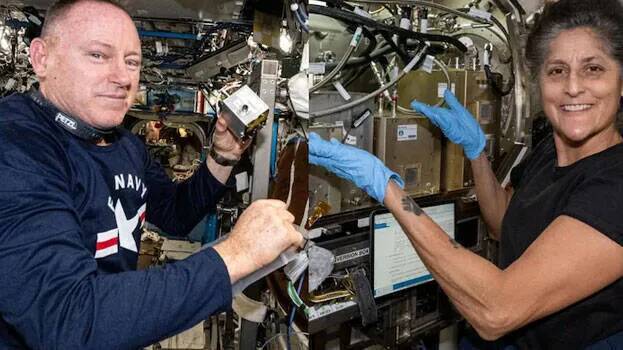

FLORIDA: A SpaceX Crew Capsule has successfully docked with a four-member crew of astronauts to the International Space Station (ISS). They have replaced Butch Wilmore and Sunita Williams. The Falcon-9 rocket launched from Kennedy Space Center on March 14. With the arrival of the new crew, Sunita Williams and Butch Wilmore, who have been stuck in orbit for more than nine months, are expected to return to Earth on March 19. The four-member crew, representing US, Japan and Russia, will spend a few days at the space station.
Sunita and Wilmore returned to the space station on June 5, 2024, for an eight-day mission aboard the Boeing Starliner. The pair were scheduled to return to Earth on June 13. The trip was cut short due to a helium leak in the spacecraft. Starliner returned unmanned on September 7. On January 30, 2025, Sunita conducted a spacewalk for more than five hours. With this, Sunita made history as the woman who walked in space for the longest time. (62 hours and 6 minutes).
Big challenges await Sunita and Butch
Life after returning to the earth will not be easy for Sunita and Butch. It is believed that both of them may have developed a condition called 'baby feet'. This is a condition in which astronauts' feet become as soft as those of babies as a result of spending months in space. For this reason, walking after reaching Earth will be extremely painful. It may take months for the skin to form on the feet. It may also be difficult to walk during this time.
In addition to the feet becoming like those of babies, months spent in the absence of gravity can also cause bone density to decrease. This may sometimes be irreversible. NASA says that bone density decreases by one percent for every month spent in space. Muscles also weaken due to the lack of movement and other activities like on earth.
Since the heart does not have to pump blood against gravity, the amount of blood in the body of astronauts also decreases. There are also changes in blood flow. The speed of blood flow in some areas decreases. This can cause blood clots. Fluids also do not drain easily. Fluids pooling can change the shape of the pupil and cause vision loss.
Another dangerous effect of spending time in space is radiation exposure. While Earth's atmosphere and magnetic field protect humans from high levels of radiation, such protection is not available for astronauts.
NASA says that astronauts are mainly exposed to three types of radiation. These include particles trapped in the Earth's magnetic field, solar magnetic particles from the Sun, and galactic cosmic rays.